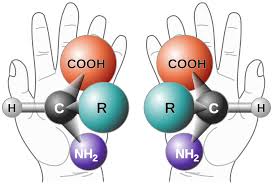Chirality:

Researchers discovered a chiral quantum state in topological Kagome lattice material (KV₃Sb₅), a material previously believed to be non-chiral, marking a landmark moment in condensed matter physics.
Key Findings:
- Spontaneous symmetry breaking was observed in the form of a charge density wave (CDW) in KV₃Sb₅.
- When cooled to 4 Kelvin, the material displayed differential response to right- and left-handed circularly polarised light, proving broken inversion and mirror symmetry.
- This is the first confirmation of an intrinsic chiral charge order in a bulk topological quantum material.
- Chirality refers to a property of an object that is not superimposable on its mirror image. It is also known as “handedness”.
- It is ubiquitous, found in amino acids, DNA’s double helix, and spiral patterns in biological organisms.
- Left-handed (L) and right-handed (D) forms are common in molecules and are essential in biochemistry and quantum physics.
- KV₃Sb₅ is a bulk quantum material with a Kagome lattice structure, composed of corner-sharing triangles.
- The Kagome pattern, originally from Japanese basket-weaving, is a platform to explore exotic quantum phenomena.
- A newly developed tool, the Scanning Photocurrent Microscope (SPCM), was used to detect nonlinear electromagnetic responses in the material.
- This is distinct from STM (Scanning Tunnelling Microscope), which provides atomic-scale images.
- The SPCM detected handedness in photocurrent, confirming the presence of circular photogalvanic effect (CPGE), a signature of chirality.




